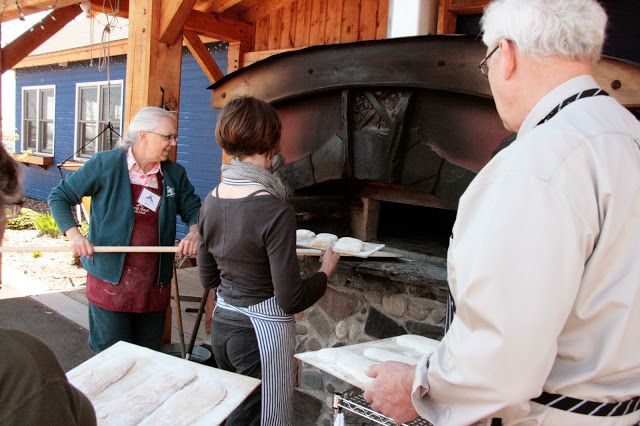
New Horizons in Baking: Sprouted Grain Flours

Bread baker extraordinaire and North House instructor Amy James is always on the lookout for new horizons in bread baking. When she found a new book by Peter Reinhart on baking bread with sprouted grain flours, she headed for the kitchen to test out these new flours.
Amy has baked with whole grain flours for a long time. Those are flours that include the germ and bran, important for nutrition and flavor. Sprouted grain flours are made from grains that are soaked and sprouted, dried and re-ground. Once the grains have sprouted, a variety of chemical reactions take place and the grains transform from a dry cereal crop to a living plant, and the resulting flour is quite different from our conventional flours.
Amy, what is so exciting about using sprouted grain flours?
Well, in whole grain baking there has been a trend towards using techniques that extract the maximum nutrition and flavor from our flours. We use preferments and long, slow, cold rises to achieve these goals. The fermentation develops more nutrition —vitamins and minerals, not just fiber—and makes that nutrition available for our bodies to digest more easily. Sprouted Grain flours do all this fermentation before hand, so the flavor and nutrition is all there, without the time. But it's also a really different animal, so you have to treat it differently than typical flours. It soaks up so much moisture, and the dough stays kind of spongy. But you are rewarded with great tasting, super nutritious, and very digestible bread.
Does it taste different?
Yes! It tastes sweeter, and there's none of the bitterness we get from whole grain wheat flours, from the bran. All that is broken down. The flavor just opens up!
You're teaching a new class using these sprouted grain flours in the spring. Can you give us a preview?
This is really a stand alone class, because the techniques are so different from the other Artisan Breads classes. We typically need to start the night before with our preferments, but this class will just be one day, and we'll still get all the flavor from our flour that comes from fermentation, except for the tang [of sourdough]. But the nutrition will all be there.
We'll make a delicious whole grain pizza dough, and we'll been making these fabulous whole grain crackers too. We use rye, wheat, kamut, spelt, and sunflower seeds for the crackers, so you can get lots of benefits from the different whole grains in these great tasting, easy to eat crackers. And then we'll make a whole grain loaf, either wheat or rye.
You've taught so many classes here at North House. Do you have a favorite part of class?
Yes! There are two touchstone moments that I really love. The first moment is when we take the first thing out of the oven and taste it. We do so much work leading up to that moment, and when we take things out and the students say "This is the best bread I've ever had!" Everyone's just so happy. The other moment is at the end of the day, when the students lay out their bread like it's in a bakery window, and take photos of each other. They are so proud of what they've made, and it's all so beautiful, like art!
The most important thing is that students are able to walk away from class empowered with the knowledge and skills to be able to go home and continue doing it.
Do you ever hear from students after the class?
I do! I love getting those emails! Sometimes it's a question, but usually they are emailing: "Amy, I just had a bake day!" and they'll send me photos of all the bread they've made at home. It's the greatest thing.